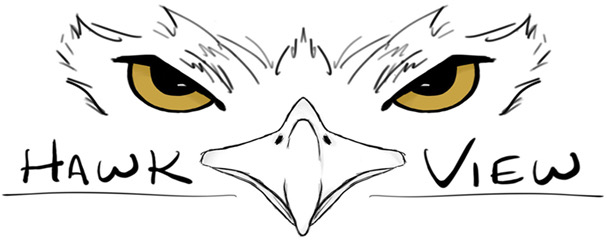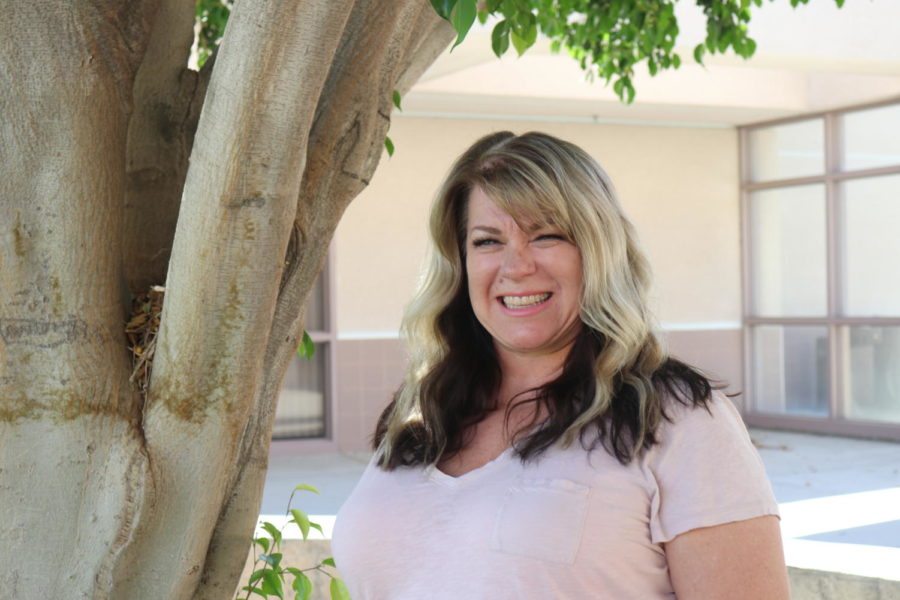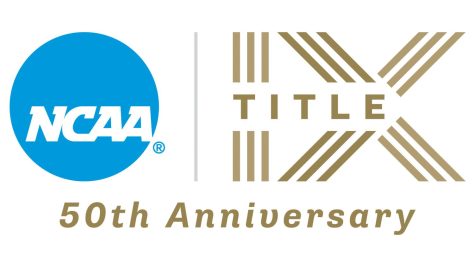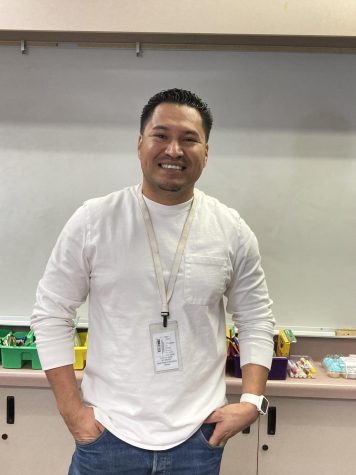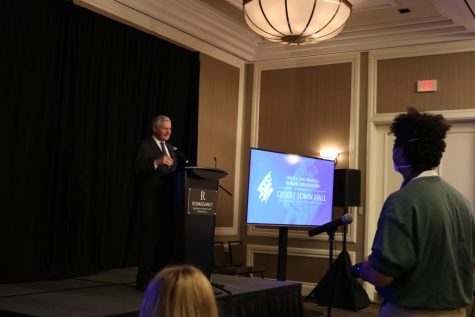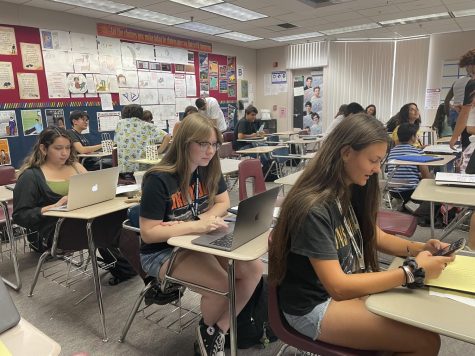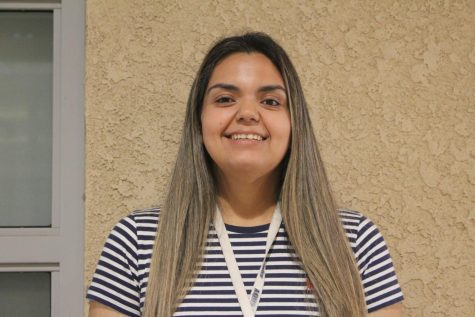Distance learning: problems and possibilities
Ms. Kelly Becker on Mon., May 17, 2021.
The day is March 13, 2020. The sky is cloudy, the trees are blissfully moving along the wind, and the sun is barely peeking through the melancholic scene of the clouds.
On a Friday afternoon, students and teachers left La Quinta High School discombobulated as to where the next few weeks were going to play out. They left under the assumption that everyone was going to be back in three weeks.
Little did they know, that would be the last day they ever stepped foot on campus.
Students and teachers were suddenly hit with the adaptation of distance learning and now, over a year later, are transitioning to hybrid learning. Students are having to learn how to adjust to the new way of learning. Some find challenges in adapting to faceless screens, overwhelming loads of work, and lack of motivation. Others find remote learning easier than classroom learning and thrive better on their own.
Kelly Becker, a history and economics teacher, is an example of someone whose struggles were most prevalent in adjusting to distance learning.
Becker is a highly regarded teacher at La Quinta High School. Like most teachers, she has been dependent on student interactions that occur in classrooms and hallways.
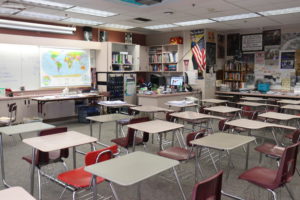
Inside room 516, Ms. Kelly Becker’s classroom.
“With classroom learning, I can see body language, eyes, ears, and reactions in the classroom,” she said. “Everything that goes on within these four walls.”
Seeing the emptiness of the school hallways and the absence of students who would scramble to get to their next class made her realize the strange new normal that she was now a part in. From Zoom meetings to online assignments, Becker had to develop ways to accommodate her new environment. She has become more flexible in accepting late assignments and deadlines, as well as the number of assignments she gives out.
“The number of assignments has been cut down by half the amount, and writing has been cut down by 70%,” Becker said.
The most visible challenge that Becker deals with is the minimal interactions she gets from students. “With no response, I take it a little bit personally,” she said. “I started shielding myself from it because it seemed like rejection in a way.”
Before the transition to the hybrid learning model, Becker predicted she would love the new change.
“It would really give me a boost to rally for the rest of the year, I would thrive,” she said.
Now, three weeks into the hybrid learning model, seeing her students in person has given her the ability to physically help them with IB deadlines. However, seeing her student in person has given her the most joy and being able to have one-on-one conversations with her students.
The difficulties that Becker has gone through have taught her how to be patient and compassionate toward her students. She understands that students are having as much of a tough time.
“Students have good resilience and they’ll get through this,” she said. “If you can get through this, you really will get through anything.”
Becker has been fortunate to have students who attend her class and care to do their work.
“If I were teaching kids who didn’t want to be here, and there were black boxes on the screen, I would feel so dejected,” she said.
Her students are what makes distance learning all worthwhile. When Becker’s struggles were most prevalent, students came together, made videos, and planned big gestures to make her feel better.
Despite the hard days, Becker reminds herself of one thing that keeps her moving: “This is not permanent. It might feel like it, but it’s not permanent.”
This is not permanent. It might feel like it, but it’s not permanent.
— Kelly Becker
Amy Chhean ‘21 is a senior at La Quinta High School. Like many students, she has faced challenges of distance learning. With the overwhelming workload that piles up and deadlines to meet, Chhean struggles to be on top of things.
“I don’t know if it’s senioritis or just pure laziness, but I can’t do any assignment. I’ll still turn them in, but they’re all late,” said Chhean.
With little motivation she has left, Chhean faces a major blockade of senioritis. However, through all her struggles, she maintains her 4.0-grade point average and tries her best to participate in class.
“My college app drives me to get good grades,” Chhean said.
Even before the pandemic, Chhean was loaded with a tremendous amount of AP and IB workload as she was taking seven classes. This took a toll on her mental health and her sleeping schedule.
“I sacrificed my sleep and I was exhausted all the time during classroom learning,” she said. “I had too much on my plate, but I still managed to get straight A’s.”
With distance learning, Chhean finds it easier to manage her work and make up for the sleep deprivation she faced. “Even though I’m not really learning anything,” she said, I feel like in an actual classroom, my classes would have been so much harder.”
Additionally, Chhean finds it hard to stay on top of assignments because she is not learning anything. “With distance learning, teachers have a lot less time to actually teach,” she said, “so they’re rushing many things.”
Since hybrid has initiated, Chhean made the decision to stay in distance learning because of how comfortable she got in attending school online. With all the uncertainty around COVID-19 at the time, it made her decision even more final in staying.
Chhean found ways to compensate for her lack of motivation. She does so by separating her relaxing spaces from her workspace or by turning on her camera during class.
“It kind of forces me to pay attention a little more,” Chhean said.
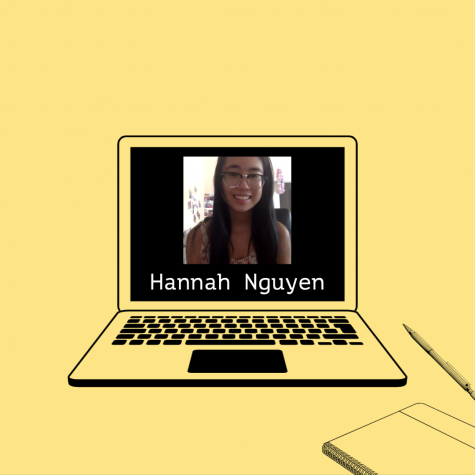
Hannah Nguyen was a senior and a second-year journalist. She is spontaneous, a terrible cook of sorts, and a milk tea enthusiast. She graduated in 2021.
